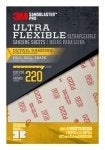I have been trying to find an easier way to sand grooves! I have a core box bit that I use to create juice grooves in cutting boards. I currently am hand sanding these using steel wool and a rubber contour sanding grips. The problem is, it takes forever if I use actual sand paper. Steel wool works better but it also wears out quickly. Both methods take a lot of work to create a nice finish.
Are you guys aware of any sort of sanding bit that can be used in a dremel tool? The problem I have with most of these bits is that they are to harsh and want to remove a lot of wood or end up leaving burn marks. I am thinking along the lines of a polished finish.
Otherwise I would love to hear how other people sand in situations like this!
Are you guys aware of any sort of sanding bit that can be used in a dremel tool? The problem I have with most of these bits is that they are to harsh and want to remove a lot of wood or end up leaving burn marks. I am thinking along the lines of a polished finish.
Otherwise I would love to hear how other people sand in situations like this!










